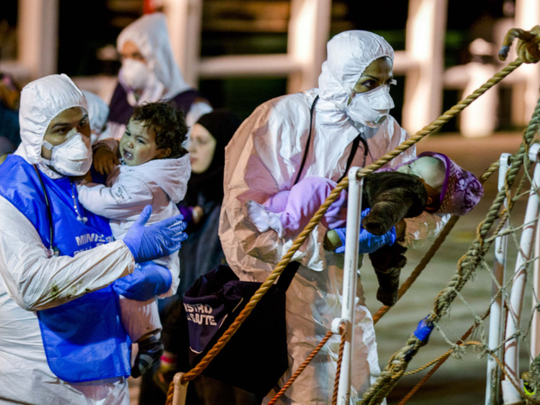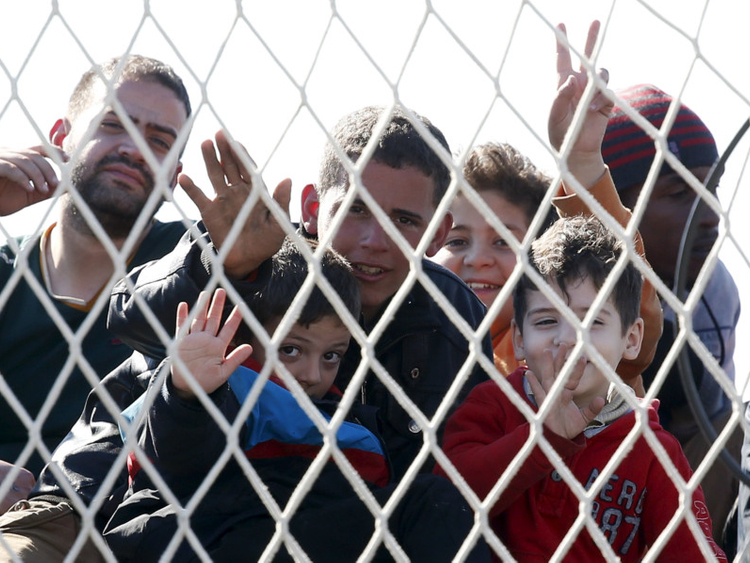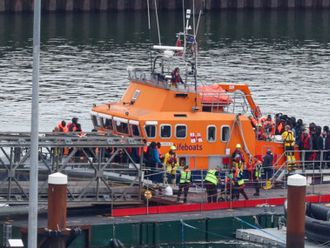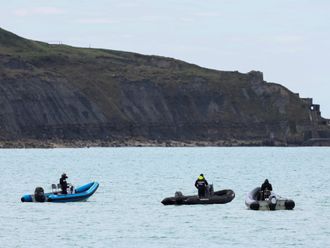
Dubai: While sounding out a warning to the European Union to keep their pledge of boosting sea rescue missions to combat the rampant rise in human trafficking, a top spokesperson for the United Nations High Commissioner for Refugees said that industrialised countries need to keep the scope of the problem in perspective.
The surge in deaths in the Mediterranean have now put the focus on the global refugee crisis and how individual countries are coping with the burden of supporting and rehabilitating victims. “While there is an increase of asylum-seekers to Europe, the vast majority of the world’s refugees – some 85 per cent – are hosted in developing countries,” Ariane Rummery told Gulf News. “If you take the Syria situation for example, some 3.9 million refugees are hosted in Jordan, Lebanon, Egypt, Iraq and Turkey, while only about 230,000 have gone to Europe.”
With top officials from the EU set to gather today to find ways to combat the rampant rise in human trafficking and share the task of resettling Mediterranean migrants, all eyes will now be on the enactment of this strategy.
“We must remember that many of the people risking their lives on the Mediterranean are people fleeing conflict and persecution and may not be illegal migrants,” said Rummery. Underlining the need for swift action, Rummery said: “First we have to save lives, regardless of status. But for those who are claiming asylum, they must be received into fair procedure... We are also calling for a comprehensive European approach, so that all countries share the burden on the countries bordering the Mediterranean.”
Asylum seekers
Hundreds of refugees fleeing to Europe through conflict-wracked Libya and other African states have lost their lives through drowning in the Mediterranean Sea, and today’s summit will aim to speed up a 10-point migration management plan that was originally due to be revealed in May.
“The situation on the ground is currently very dynamic… After the tragic shipwreck in Malta at least six boats have been rescued and 1,500 people brought to land. We believe that there are a high number of asylum seekers who are preparing to cross in the Mediterranean from Libya, Turkey and Egypt,” Carlota Sami, UNHCR spokesperson for southern Europe, told Gulf News.
According to analysts, at least one million migrants are currently stranded on the shores of the Libyan coast, waiting to make the crossing, while traffickers have been making a financial killing by charging exorbitant sums of money. With weather conditions improving, there is speculation that the time is conducive for a spike in crossings made into Europe.
Worst-case scenario
The UNHCR is factoring in the worst case scenarios in this context. “We have been calling for urgent measures to boost search and rescue operations to save lives,” said Rummery. “There are more boats on the move… All the indications suggest it could get worse. The number of sea crossings are up as we move into the warmer months, and the number of accidents and deaths are also up – as more and more desperate people are crammed into unseaworthy boats.”
According to Rummery, the number of people displaced by wars and conflict are on the rise globally. “New conflicts begin while the old ones are not solved. The situation in Libya is merely fuelling the situation, as refugees and migrants there see no other option but to take to boats. So, things could in fact get worse if there isn’t urgent action soon.”
Most aid agencies have now been hard pressed to provide refuge and stability to the victims and this includes the authorities on the ground as well as the UNHCR.
A staggering six percent of the migrants have been unaccompanied minors and efforts to resettle them are underway. “As far as asylum-seekers are concerned, unaccompanied minors usually receive special attention…However, this is only relevant to those who come forward to authorities and claim asylum,” said Rummery.
As the economically stretched EU copes with implementing its 10 point plan, and a reasonable distribution of refugees across the continent, the fact remains that the ground reality need to be addressed. This means tackling the problem in the victim’s backyard.
“The root causes that propel people to risk all on these dangerous journeys need to be addressed,” said Rummery. “Ideally they should be able to receive better protection and assistance and a chance to restart their lives close to home. But the reality is the scale of displacement today and this means that some people will move spontaneously further afield, particularly as they struggle to find protection, a dignified life and a chance to restart their lives in places closer to home or first countries of asylum.”













